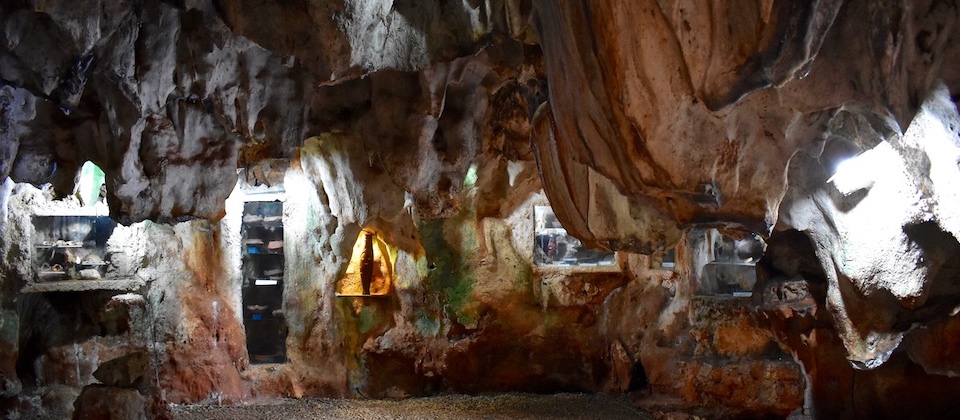
Published on 16 June, 2018.
The Baracoa region has several highly important archaeological sites in Cuba. If you are not able to do a one-day excursion to visit some of them, there are a couple of places in town where you can learn more about the life of the Taino people before Columbus.
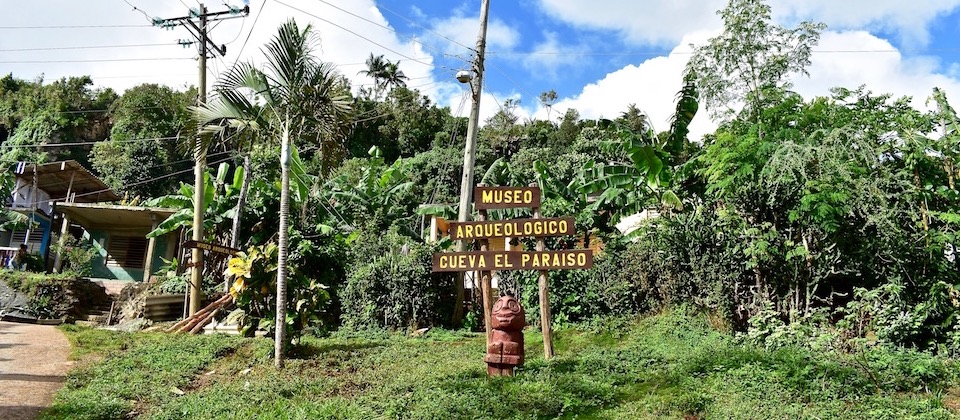
Villa Paradiso recommends visiting the Cuevas El Paraiso Archaeological Museum – and the exhibition room at the Archaeological Society of Baracoa.
The Cuevas El Paraiso Archaeological Museum
Founded by members of the Archaeological Society of Baracoa in 2003, the Cuevas El Paraiso Archaeological Museum is featured in a number of travel guides and websites.
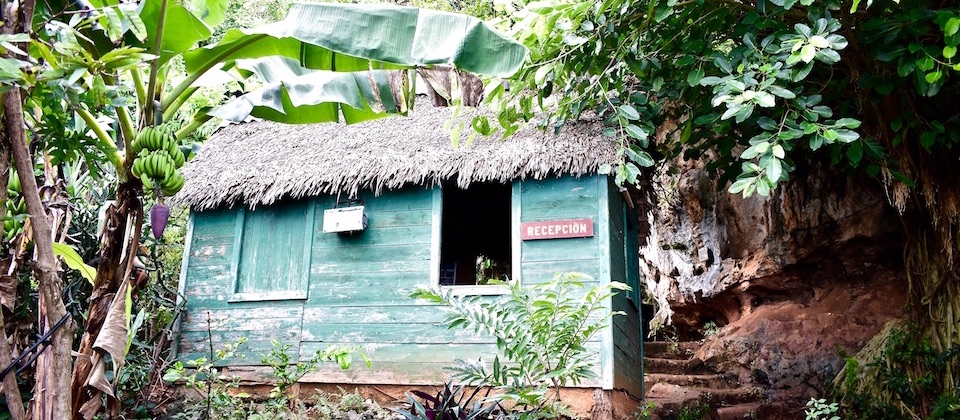
The museum is on El Paraiso hill and neighbourhood, where Villa Paradiso is located (we’re about one block away from the museum). You’ll sweat a bit as you walk uphill, but it’s really worth it! The museum director, Noel Coutin Lobaina, offers visitors a rich and detailed talk about the Taino people and the museum itself.
Over one hundred artifacts, including original pieces and reproductions
A natural system of caves called Cuevas El Paraíso is home to the museum. A large part of the exhibition consists of staging the various aspects of the Taino everyday life.
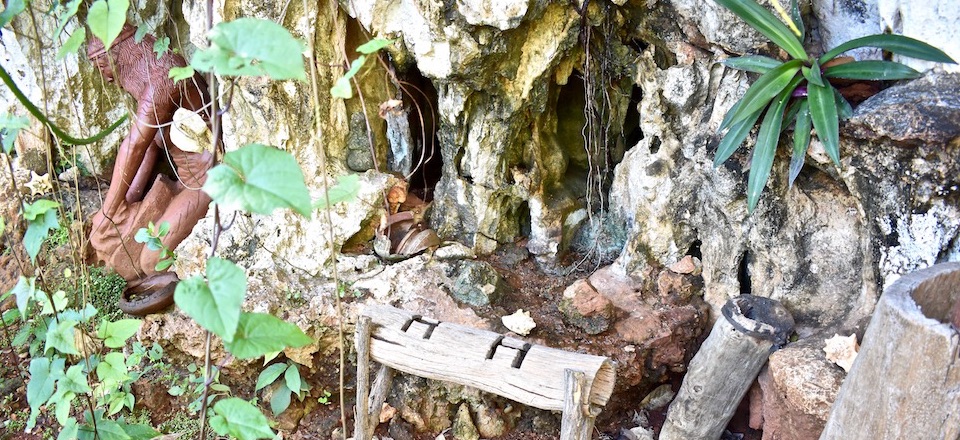
The museum houses an important collection of original pieces. Among these you’ll appreciate pottery, sea shells and everyday life tools. All original objects are protected behind glass screens.
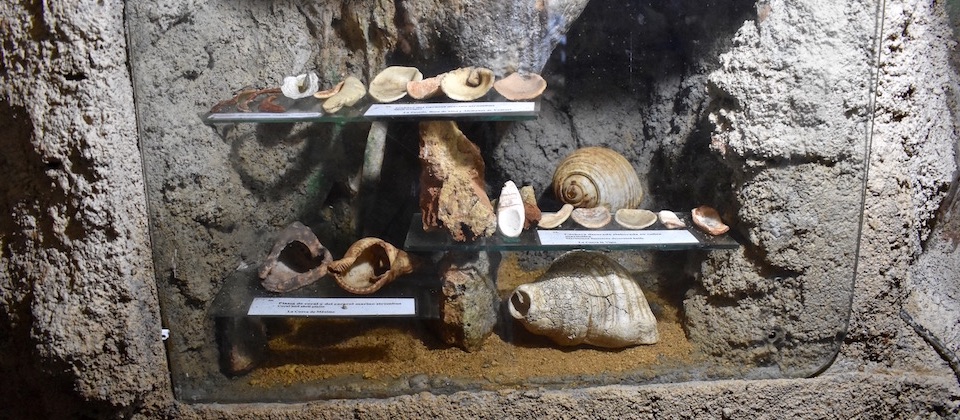
Among the reproductions you’ll find at the museum there is a canoe, made in the ancient Taino manner – a one-piece object, carved out of a single tree trunk. Such a practice was not a threat to the flora five centuries ago when forests were so abundant and the population numbers so low.
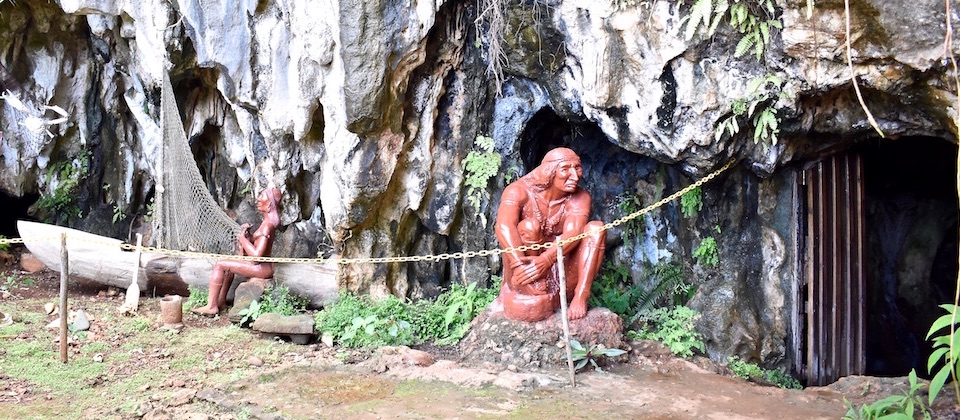
There are also musical instruments as well as the types of tools that were used to grind corn or to squeeze grated cassava. The later was used to make “casabe” bread, which was a staple in the Taino people’s diet.
Ceremonial burials and the Cemí, or tobacco idol
Other key pieces in the archaeological museum include skeletons that show what burials were like before the Spaniard conquerors arrived. One of these skeletons was found at theCueva del Cacique(or Cueva de la Vigía) archaeological site, in the small community of Boma. Everything indicates that these bones could be those of Guamá, a Taino chief and great leader of Tainos’ resistance before the Europeans.
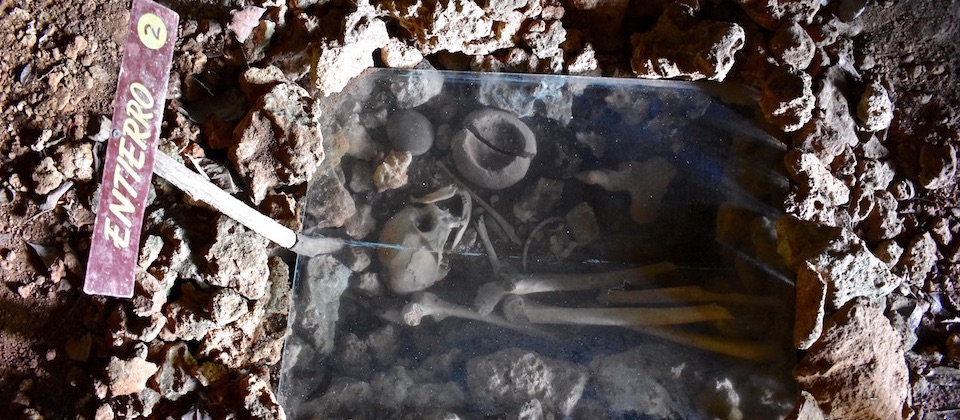
A very interesting piece is a reproduction of the Cemí de Gran Tierra, know as well as the tobacco idol. The original piece was found in the early 19thcentury and it currently is exhibited at the Luis Montané Museum in Havana. Another, significantly larger reproduction of the Cemí de Gran Tierra lies high on La Farola, the spectacular road in the Sierra del Purial through which you arrive in Baracoa coming from Santiago de Cuba and through Guantanamo City.

Another original piece representing the Tobacco Cemí was carved on a stalagmite in the La Patana cave, in the Maisi area. It was found in 1915 by American archaeologist Mark Harrington. He removed the piece from the cave using a saw, divided it into three pieces and took it to the United States.
Several stories of caves and amazing views on town and the bay
Due to humidity, the floor in these caves is slippery. You should tread carefully and hold on to the balusters. When you visit the museum you will walk in and out of the caves several times as you go from one cave to then next. You will be able to appreciate archaeological objects both inside the caves and outside, among the vegetation.
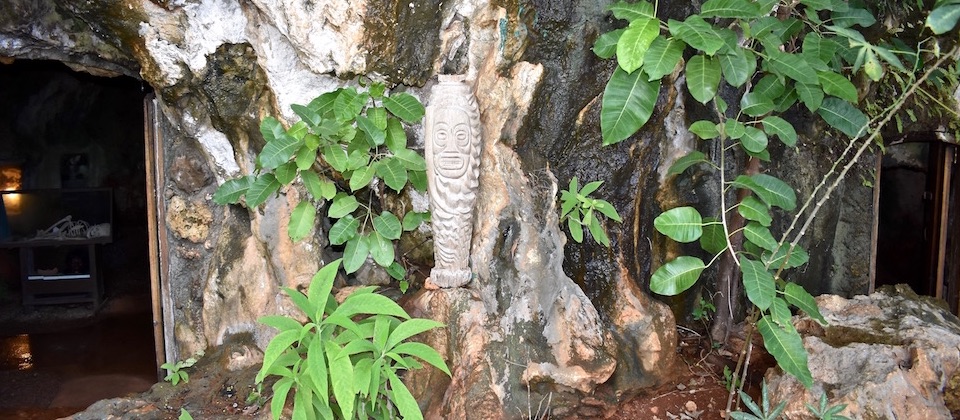
In several places in the museum grounds you’ll find lookouts offering you a beautiful view on the city and the Miel Bay.
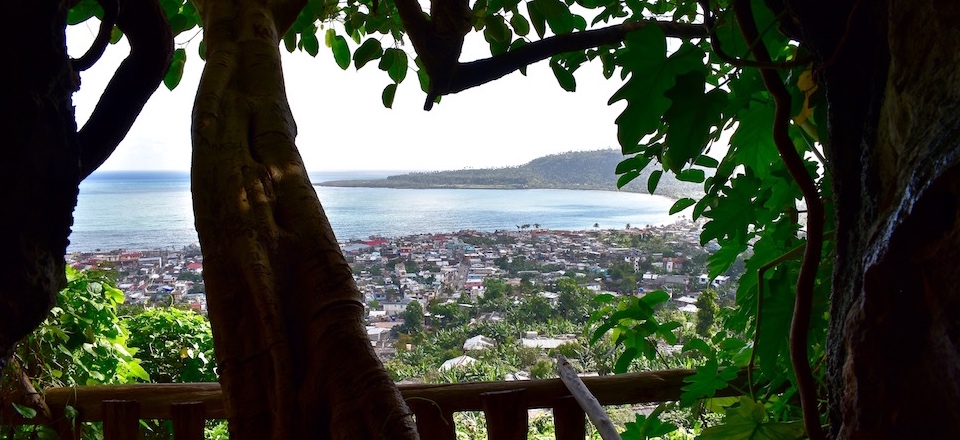
The Baracoa Archaeological Society
Not far from Baracoa’s malecón (seaside drive) lies the Baracoa Archaeological Society. An excellent exhibition room treasures Taino objects of great value for Cuban archaeology and of great interest to visitors discovering our region.
The early years – a group of passionate youth, guided by notable scientists
In 1977, a group of youth got together over their shared interest for archaeology. Their initial explorations were directed by the famous Cuban geographer Antonio Núñez Jiménez, a great ecologist who influenced the protection approaches given nowadays to Baracoa’s natural riches.
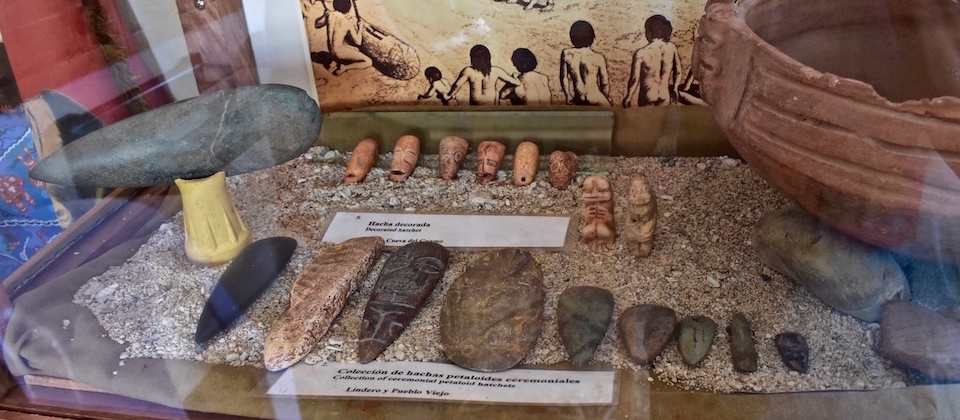
Under the name Grupo Cacique Hatuey, this group would benefit as well form the support of anthropologists and archaeologists such as Manuel Rivero de la Calle and Ramón Dacal Maure. In 1990 the group becomes the Baracoa Archaeology Society. Since then, its director has been archaeologist Roberto Ordúñez Fernández.
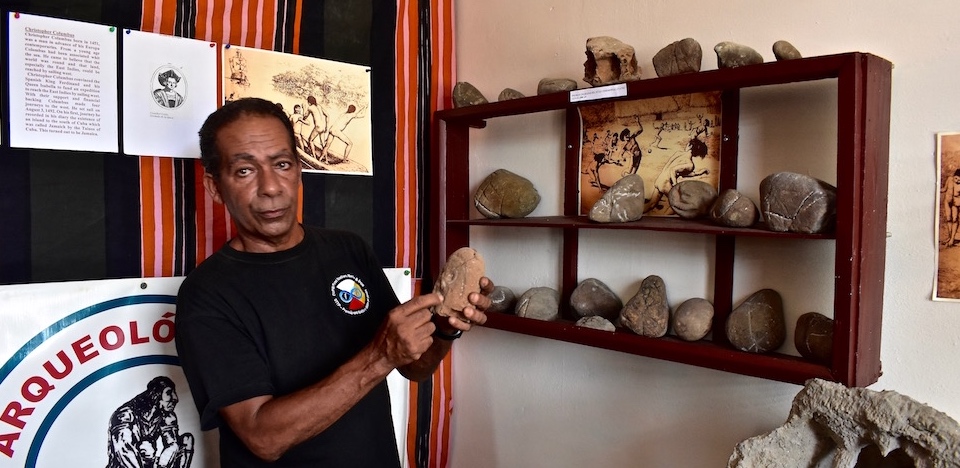
A myriad of explorations in Baracoa and Maisí
In collaboration with Cuban and foreign experts, the Baracoa Archaeological Society has carried a large number of multidisciplinary excursions to establish an inventory of the region’s numerous archaeological sites.
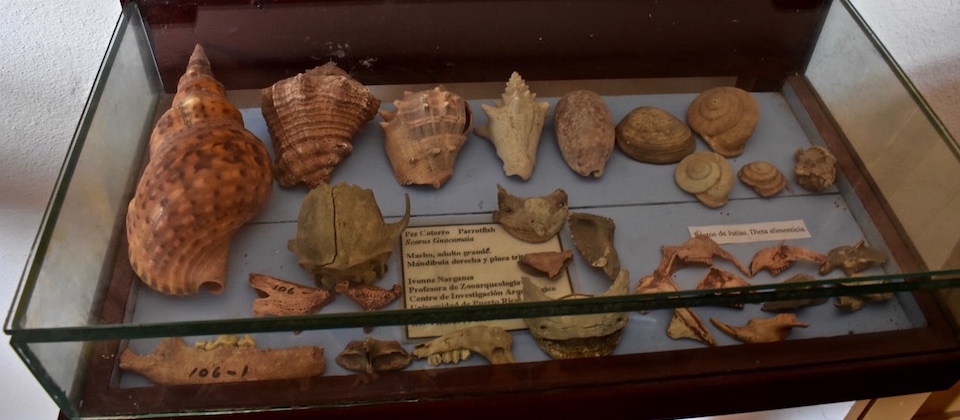
Among such sites is Cueva del Cacique (or Cueva de la Vigía), in Boca de Boma. But the Baracoa Archaeological Society also played a key role in developing the management framework for the Yara-Majayara protected area, as well as other sites of high archaeological significance.
A rich collection in a small exhibition room
A guided visit to the Baracoa Archaeological Society’s exhibition room will allow you to learn a lot about the Taino people in this region before Columbus. Roberto Ordúñez’ explanations show his passion, knowledge and deep and longstanding work.
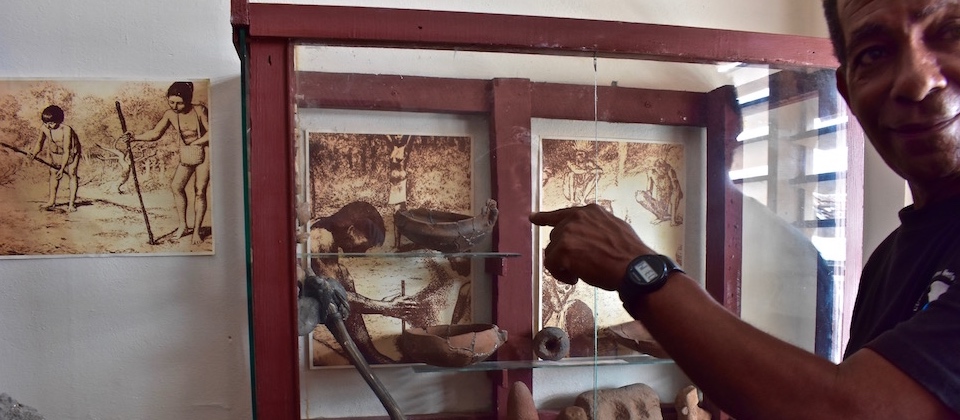
The initial display cases in the room place the Taino culture in the larger context of the original peoples of the Americas.
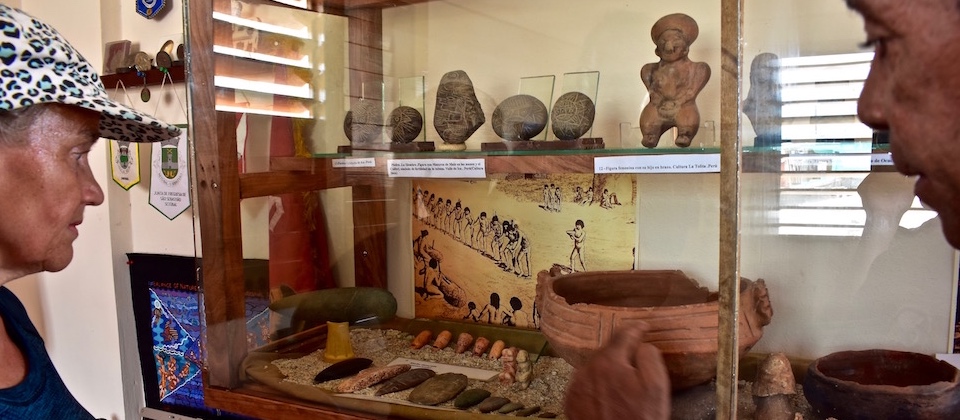
Glimpses of the Taino life
The collection encompasses original objects and reproductions – pottery, carved stone, tools and evidence of the Taino nutrition habits.
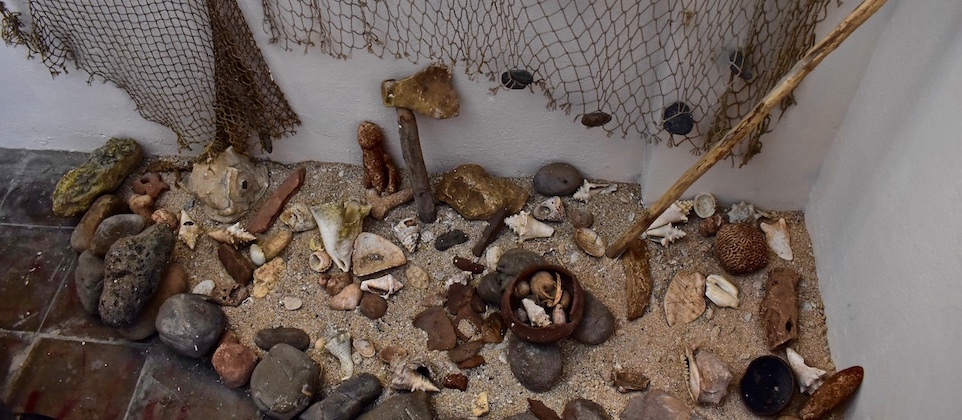
Since only a few months ago, the exhibition room features a beautiful Taino village mock-up.
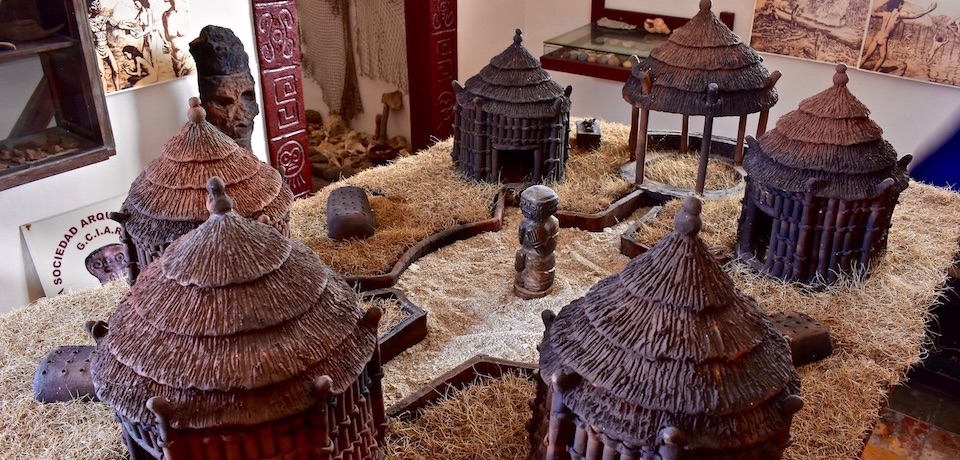
Unique and amazing pieces
One of the fascinating pieces shown here integrates various aspects of the Taino world view. From one angle, the piece is composed of an owl, representing the world of the dead, and a vagina, suggesting birth and fertility.
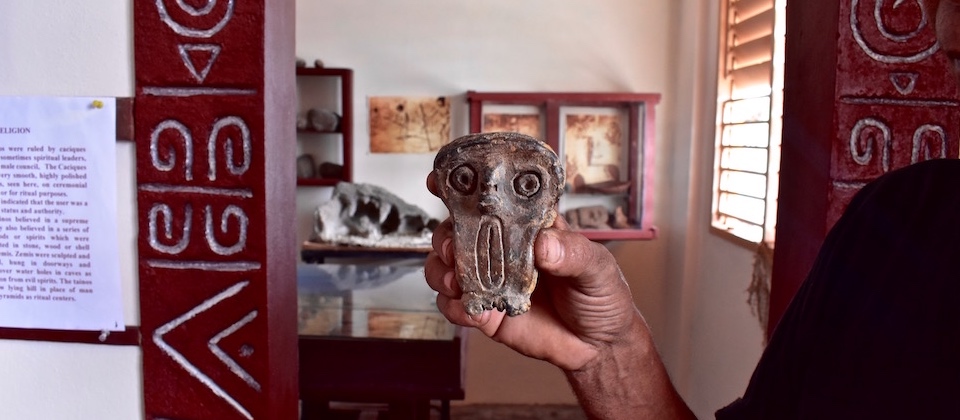
From a different angle the piece represents another key image in the Taino view of the universe: the frog, called Toa or Toar in Arawak language – which, by the way, gives its name to Cuba’s most voluminous river and the biosphere reserve where it lies.
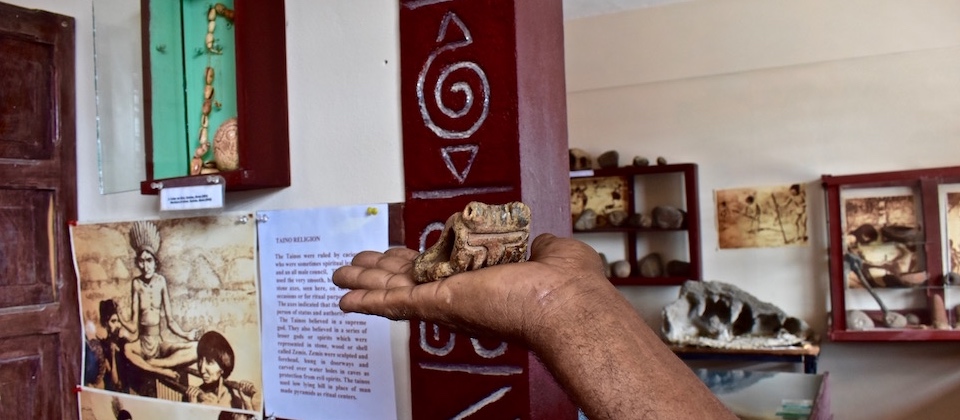
To learn more, in a deeper manner and with more detail you have to take a guided visit to these museums only a few steps from Baracoa’s old centre.
Did you know?
This blog entry talks about the Taino people only from an archaeological point of view. Even if many people would tell you that the Taino were totally exterminated by the Spaniard conquerors, Cuba’s history and present-day reality show otherwise. In the Guantanamo province there are Taino descendant communities. Another important angle to approach the Taino presence in Cuba is to look at their cultural contribution to today’s Baracoa.
Practical information and budget details
- The entrance fee to the Cuevas El Paraíso Archaeological Museum is 369 CUP (Cuban pesos) If you request a guide’s service, then it is 492 CUP. And if you wish to take pictures, the total price is 615 CUP.
- There is no entrance fee to the exhibition room at the Baracoa Archaeological Society. We recommend that you make a voluntary donation to support the Society’s work.
Activities, Baracoa, Sustainable Tourism
Tags: Archaeology, Culture, History

Recent Comments
Looking forward to visiting Baracoa and discovering more about its flora, fauna, and history.
Everything is ready for your visit, Doreen! We look forward to welcoming you in a few days! 🙂